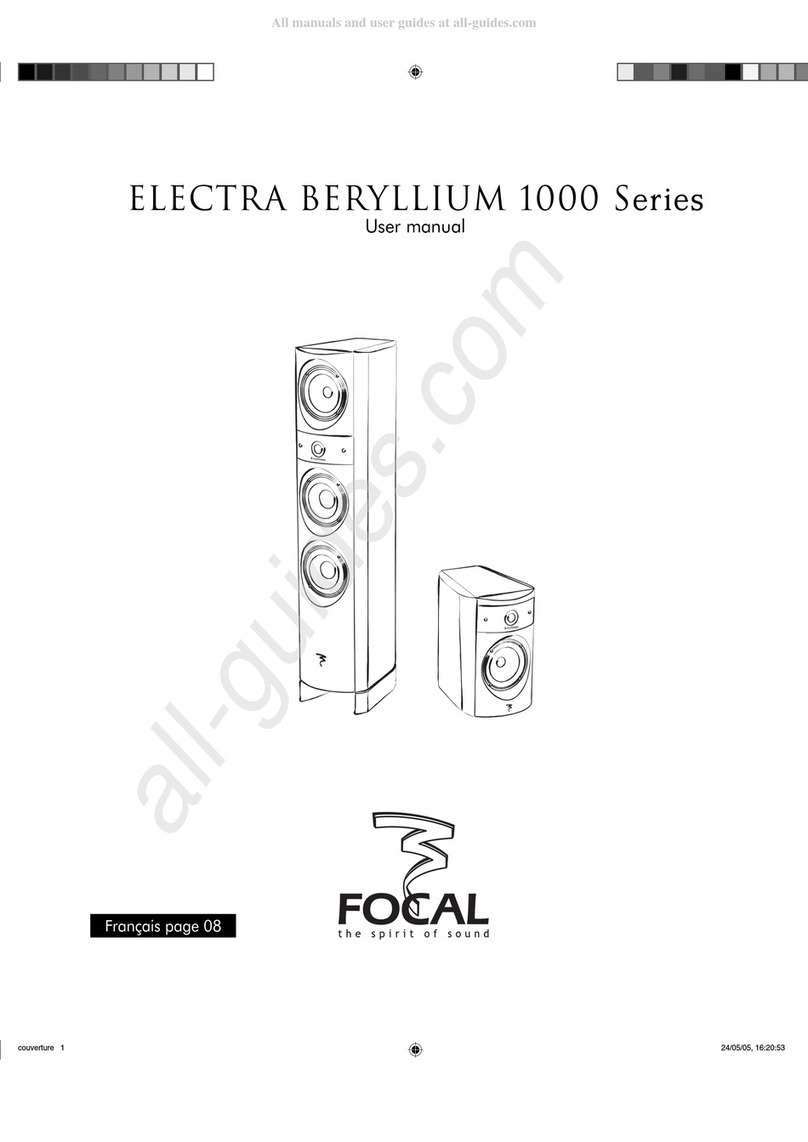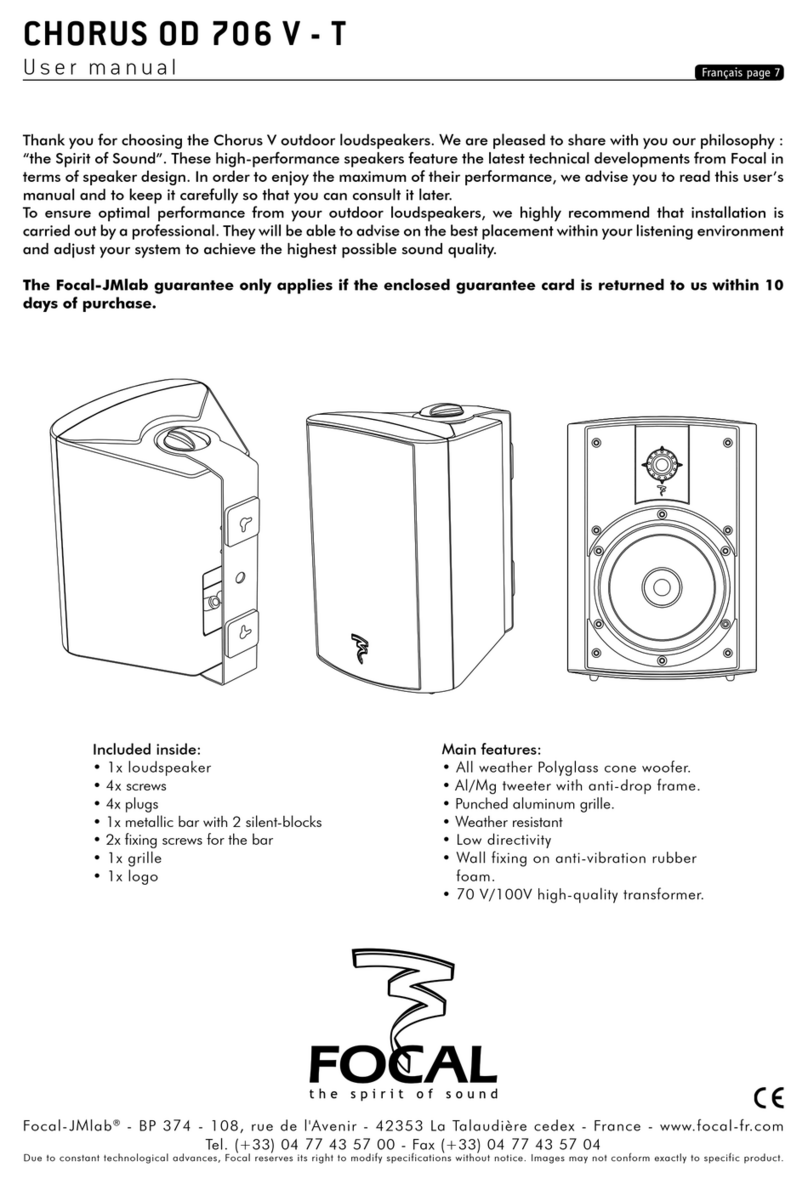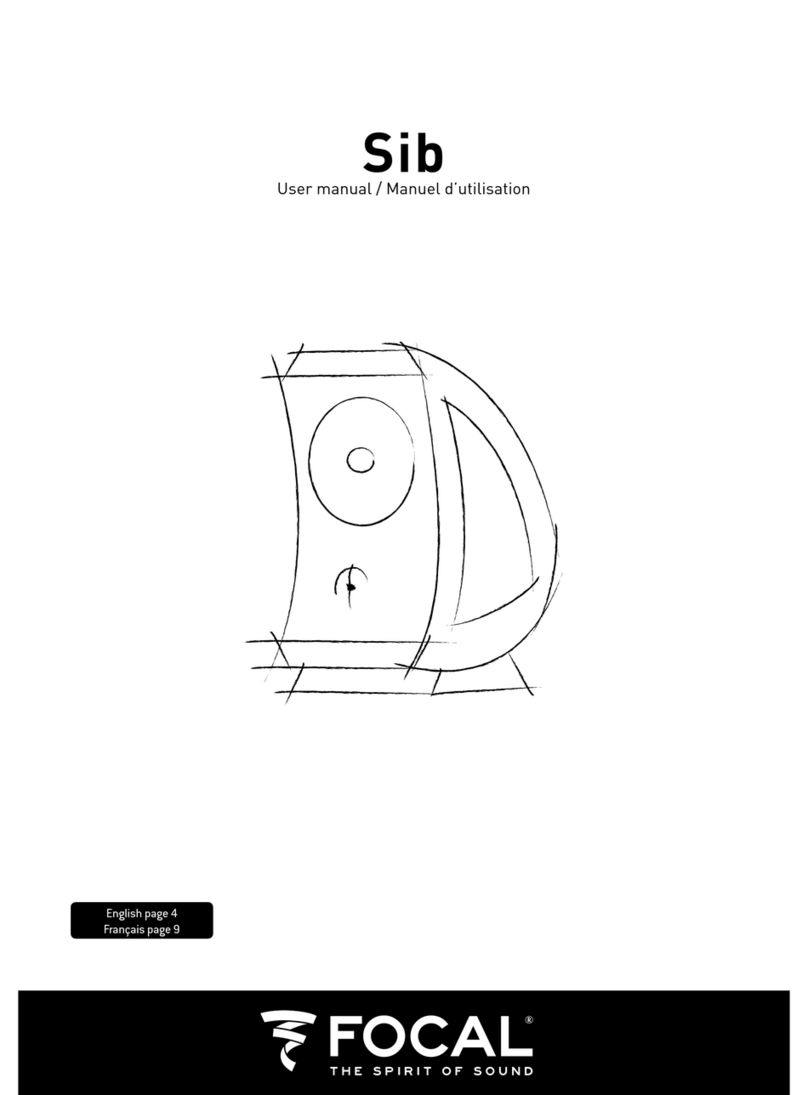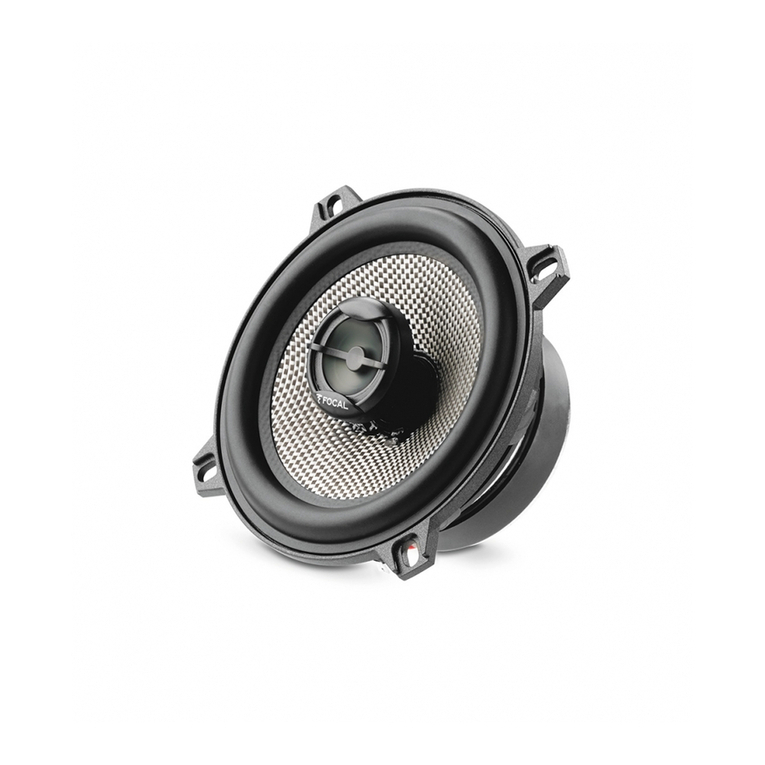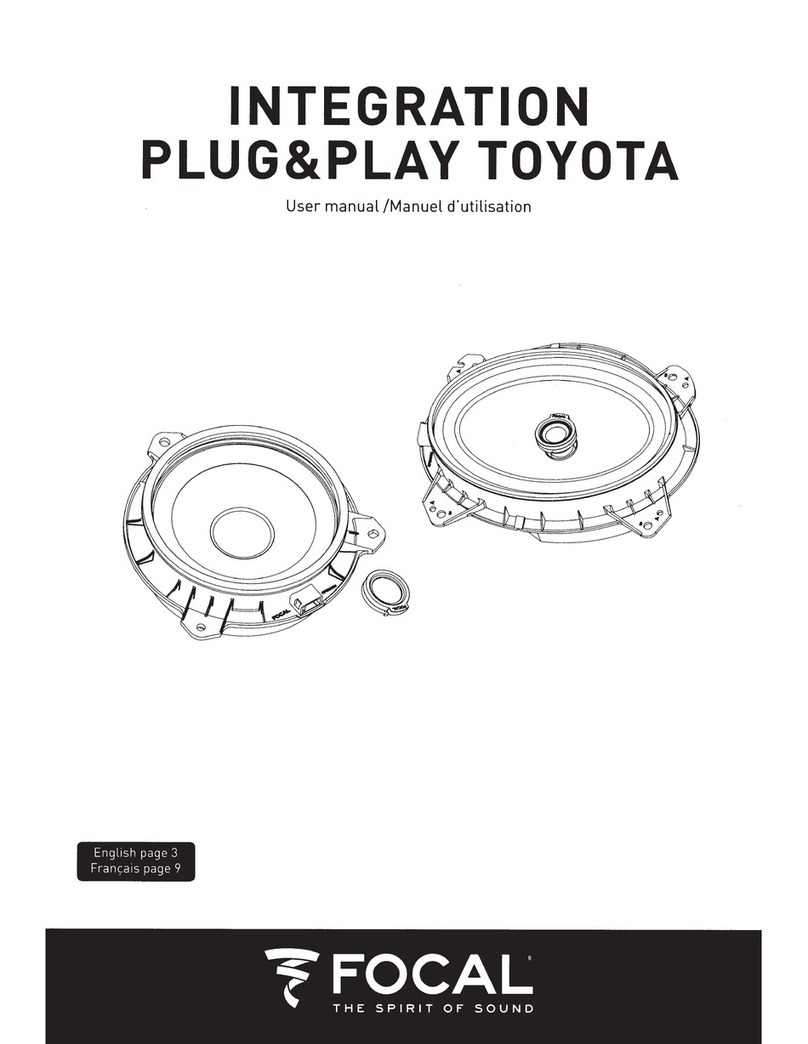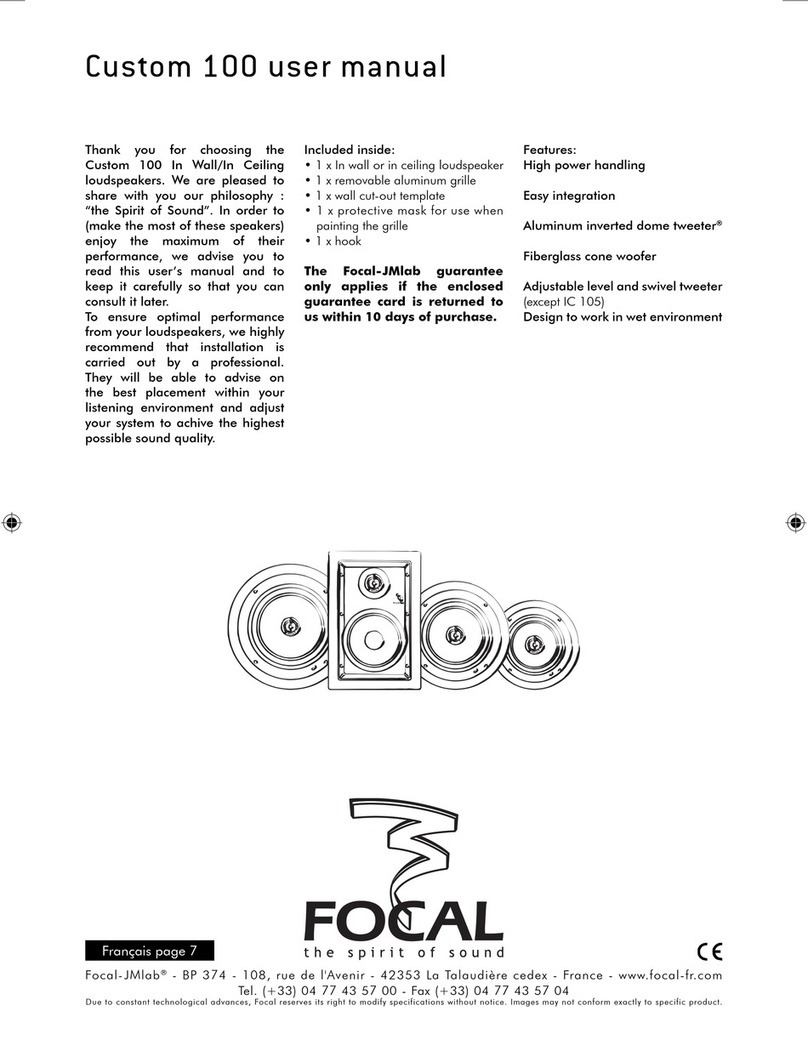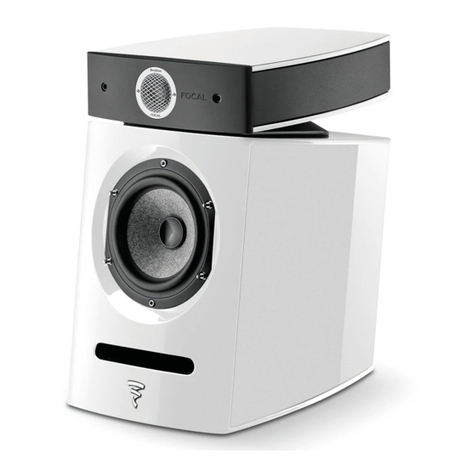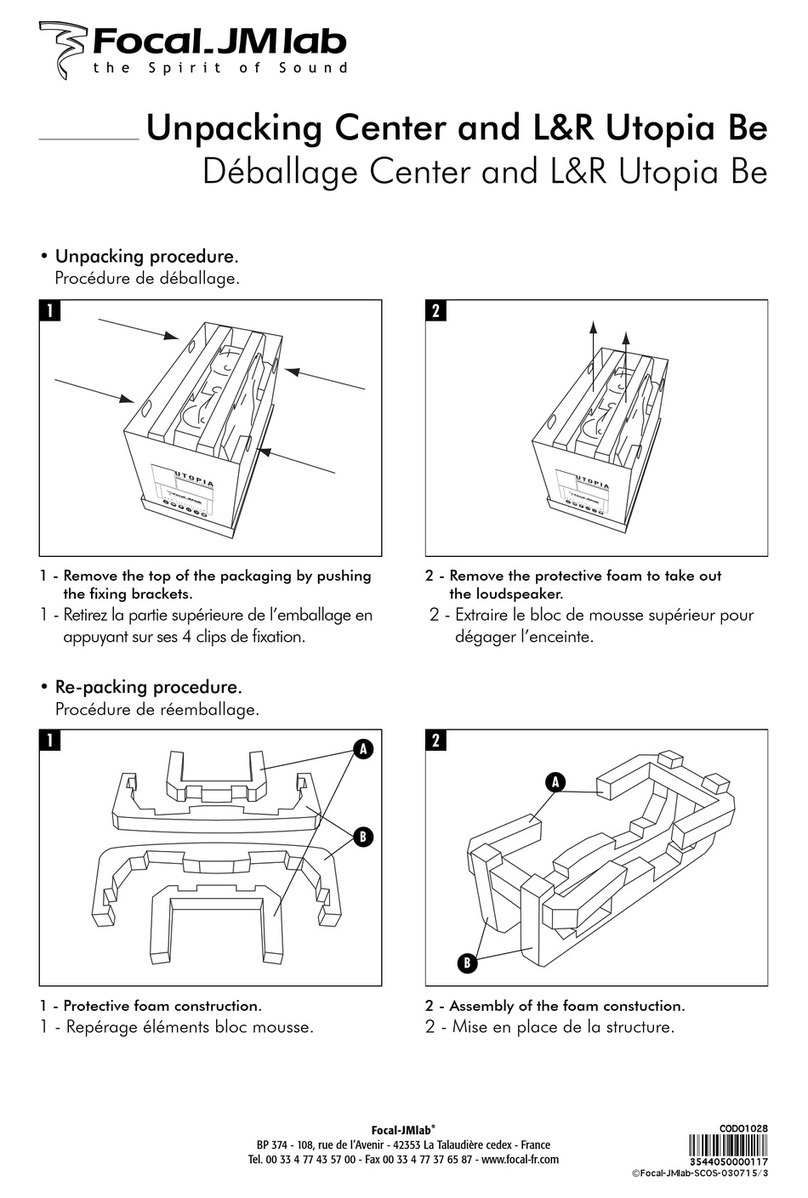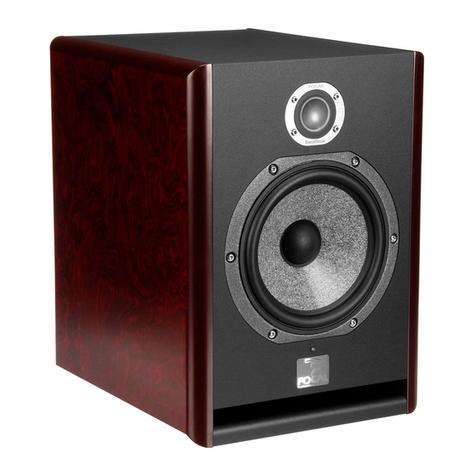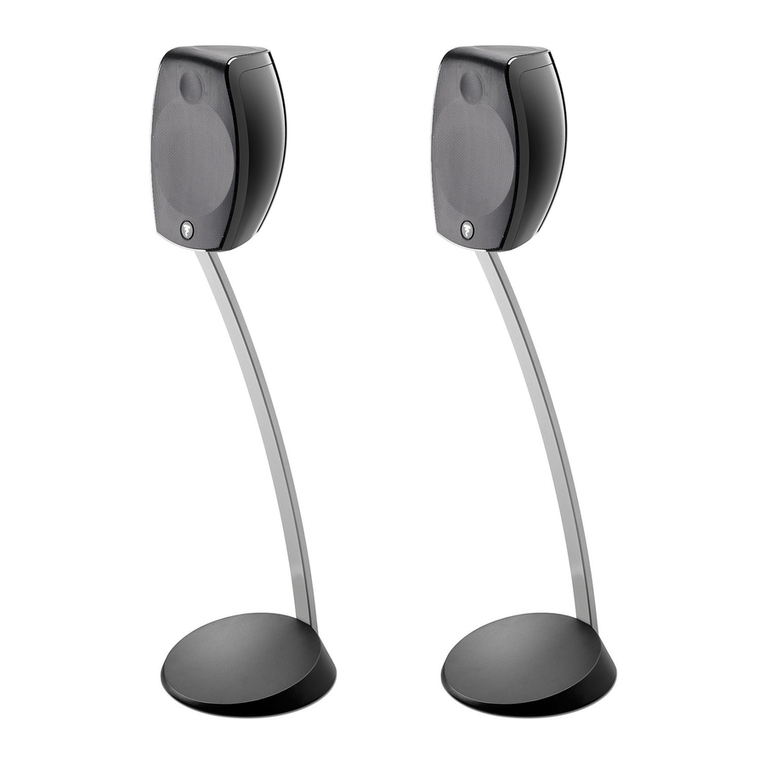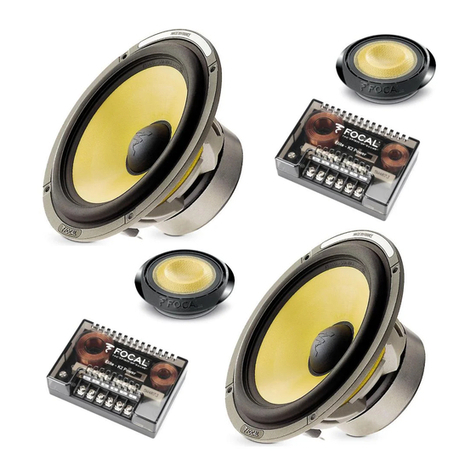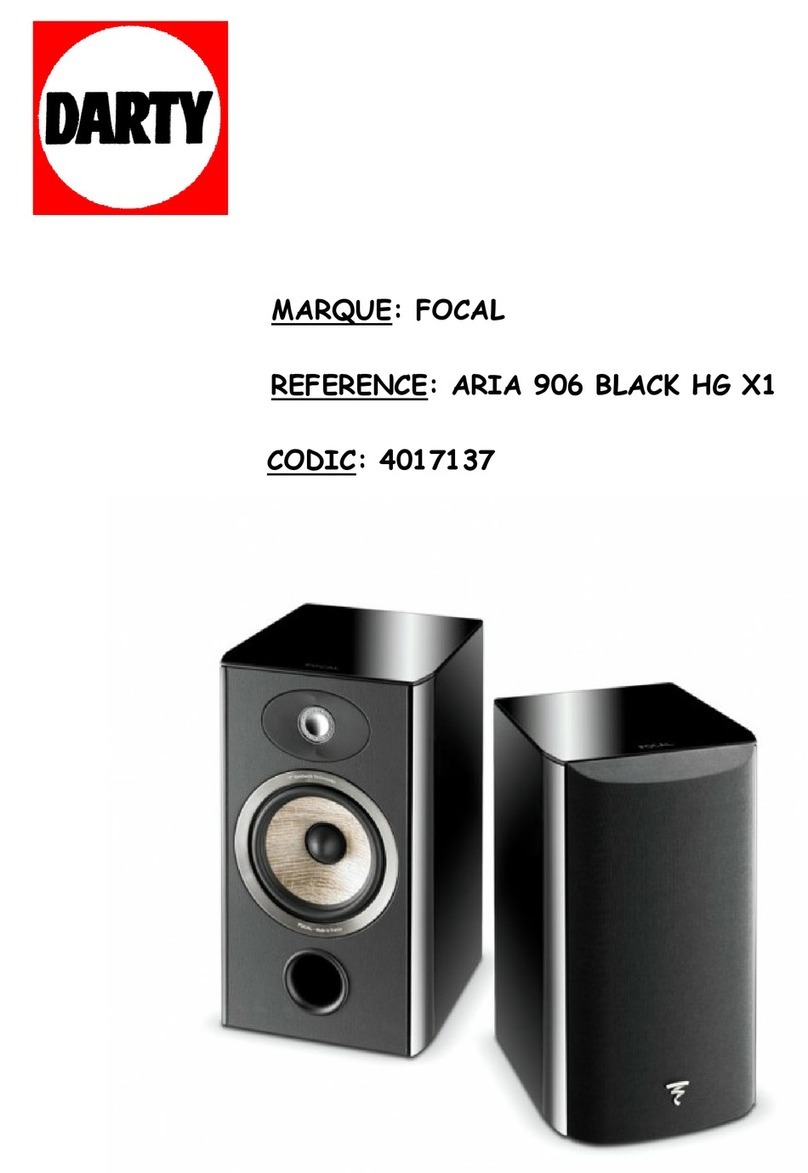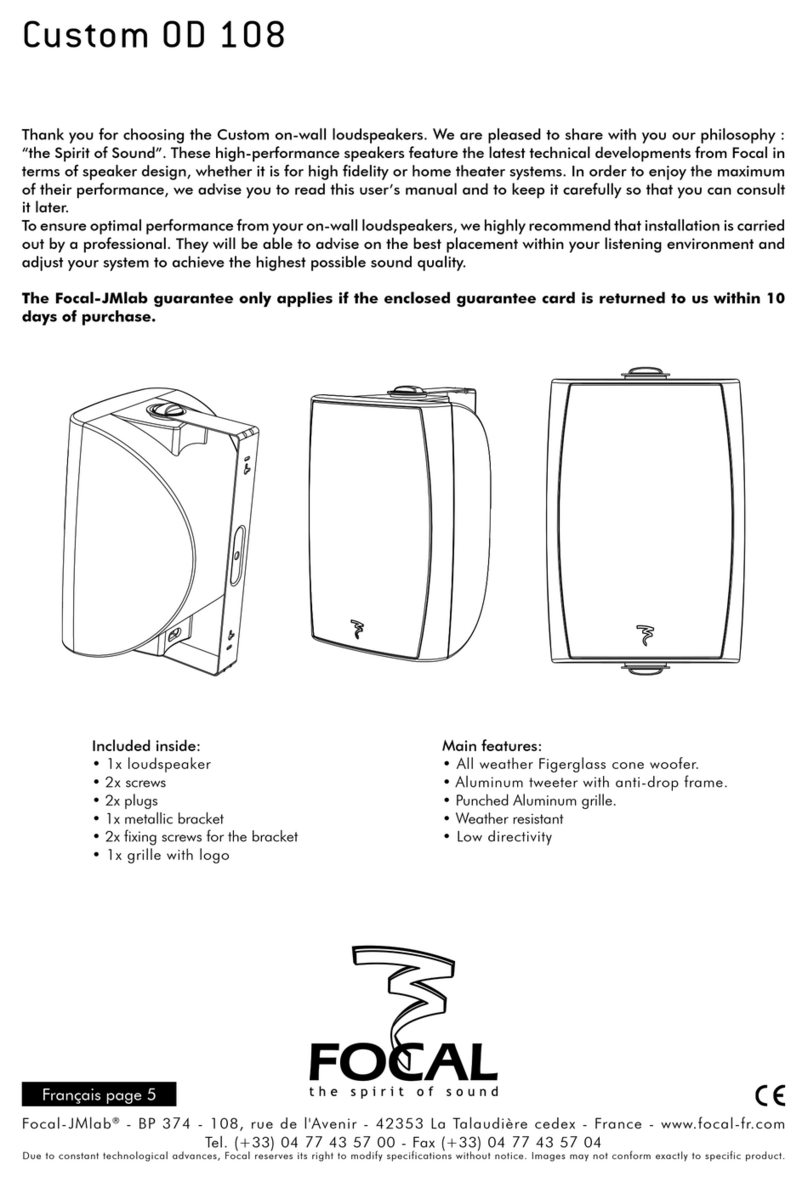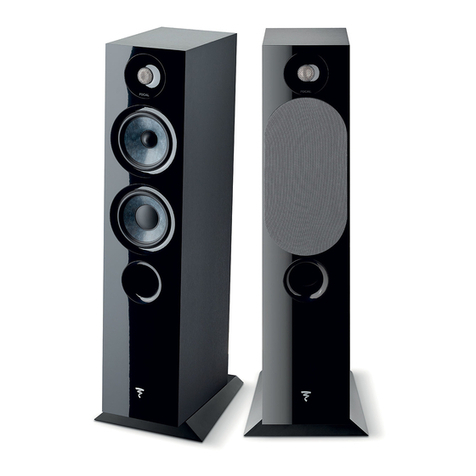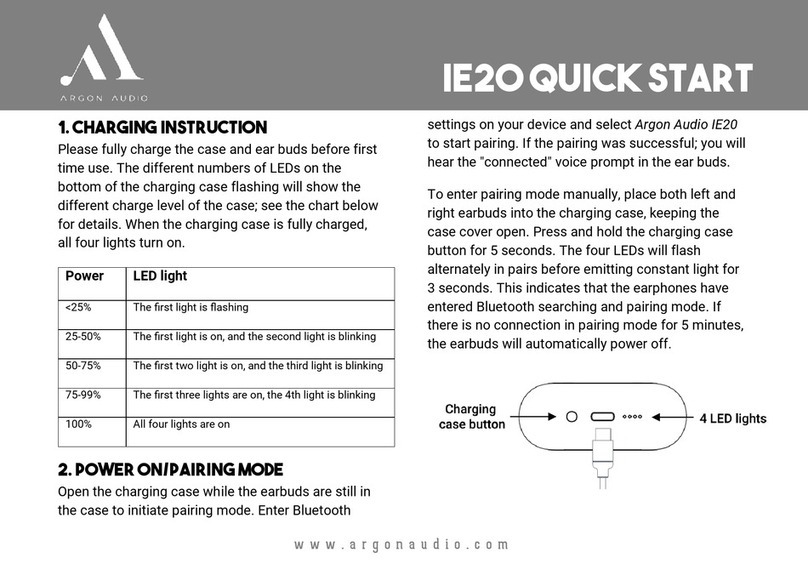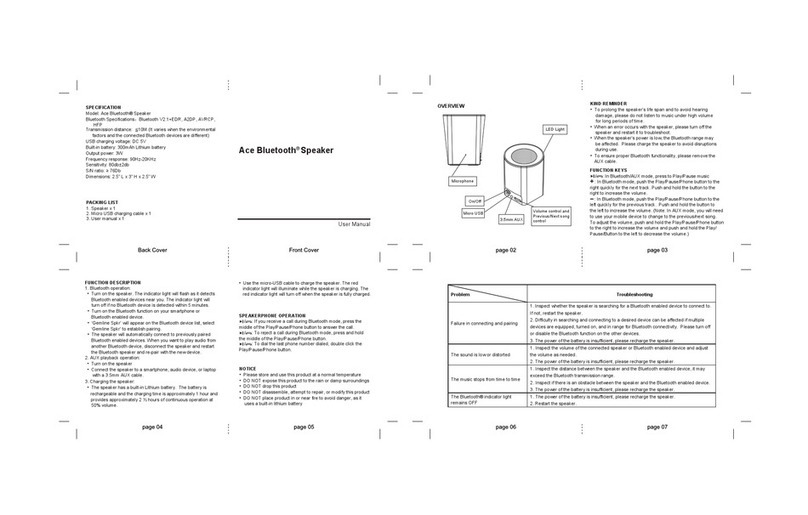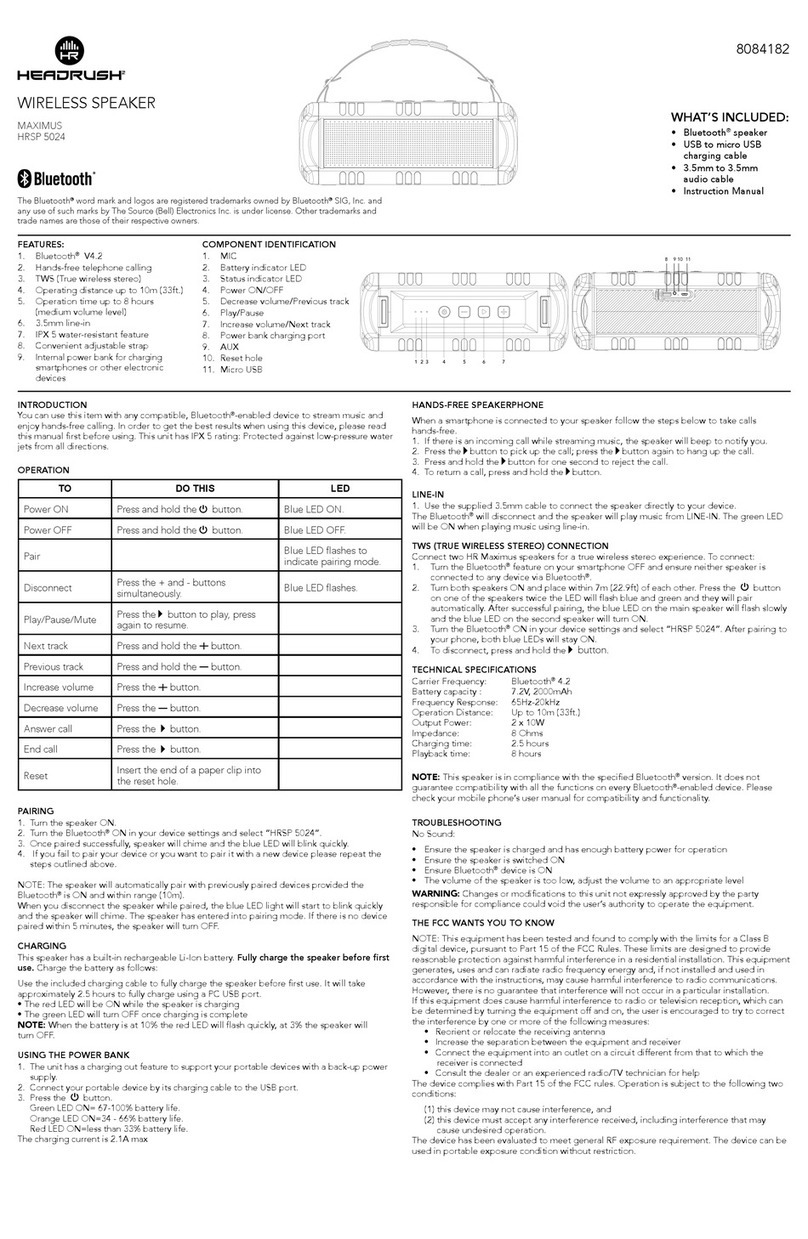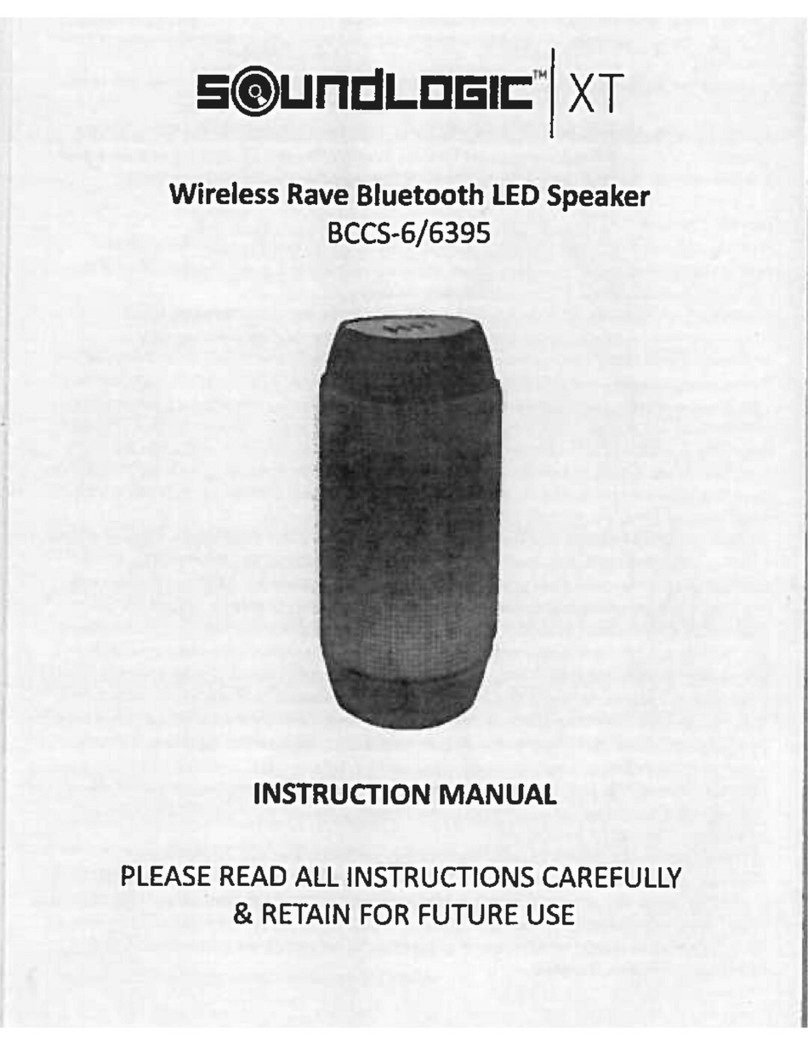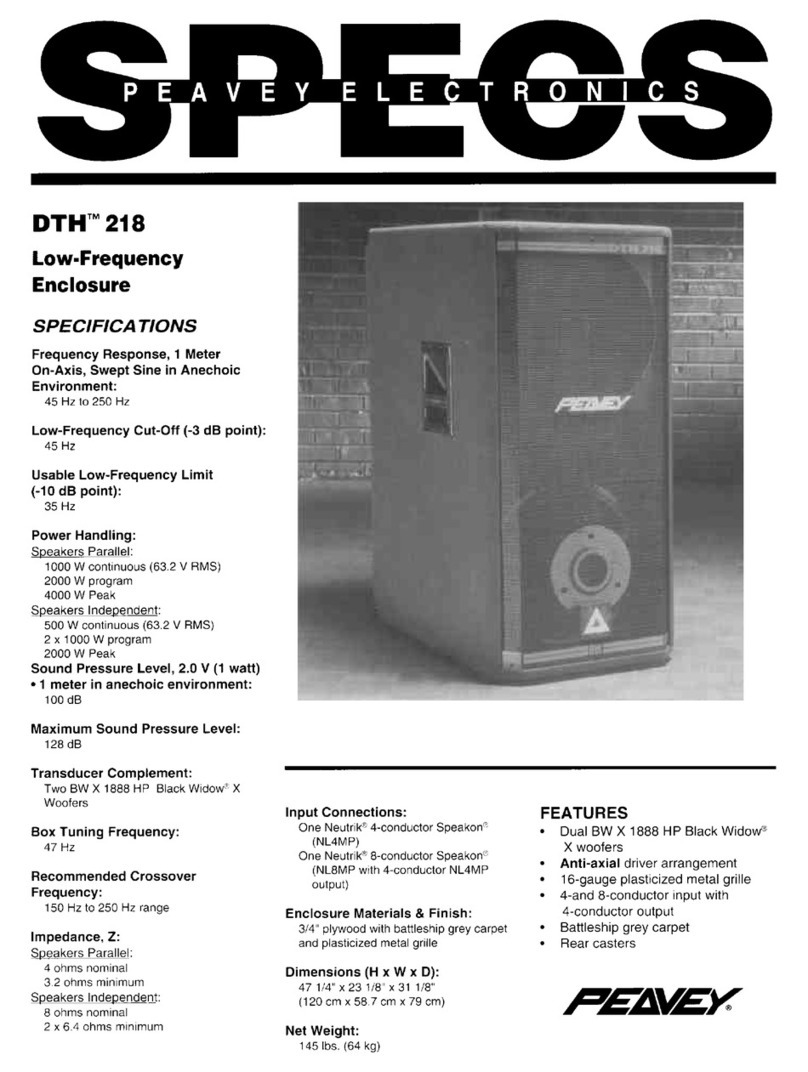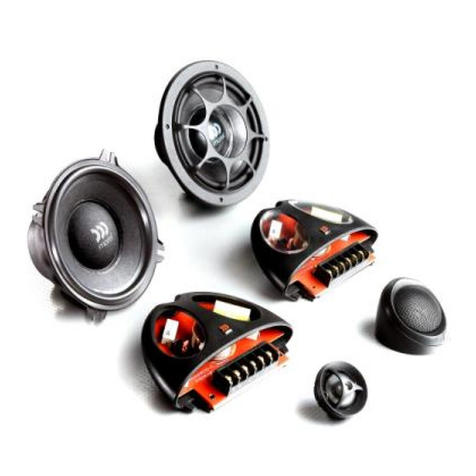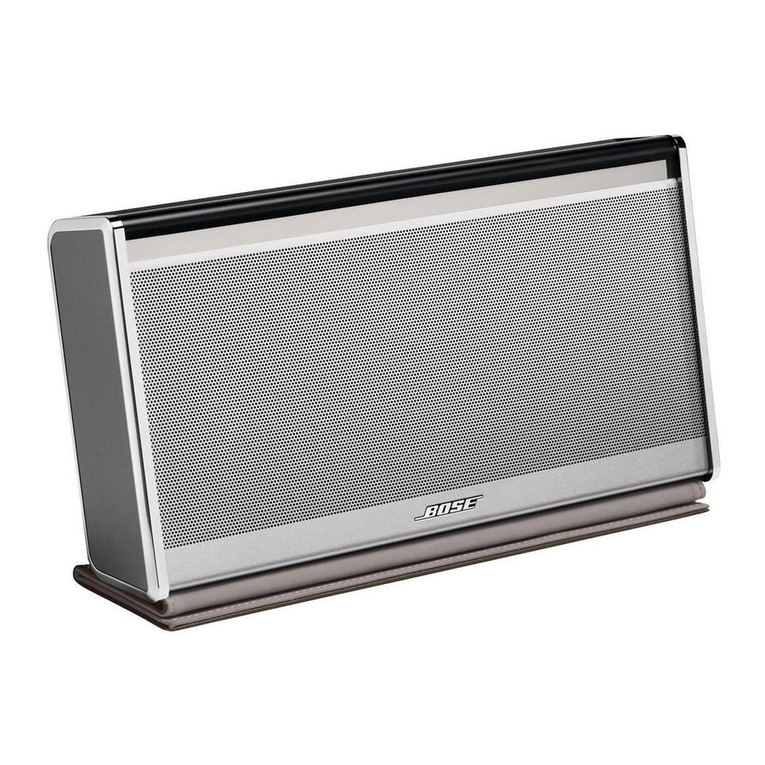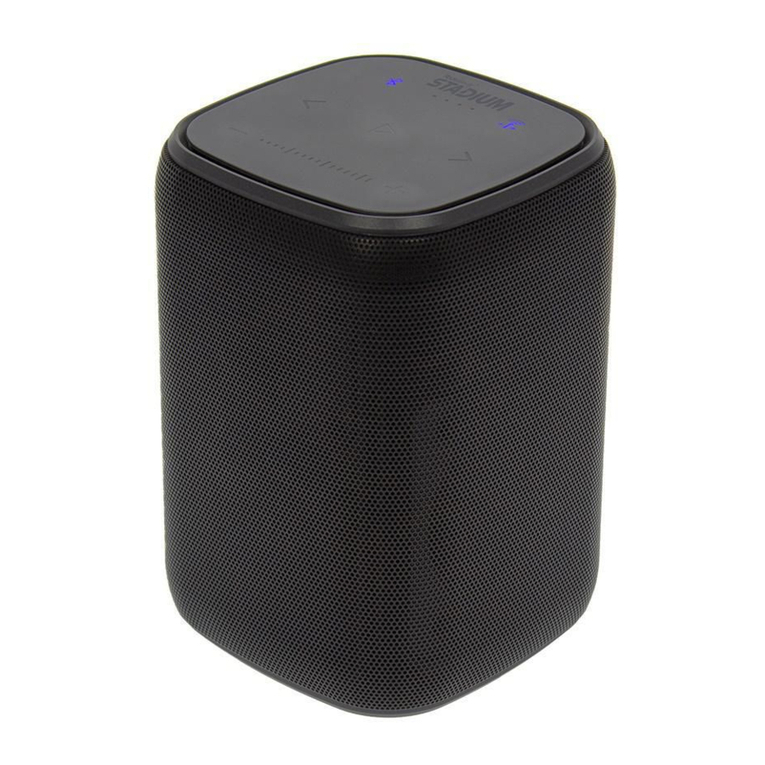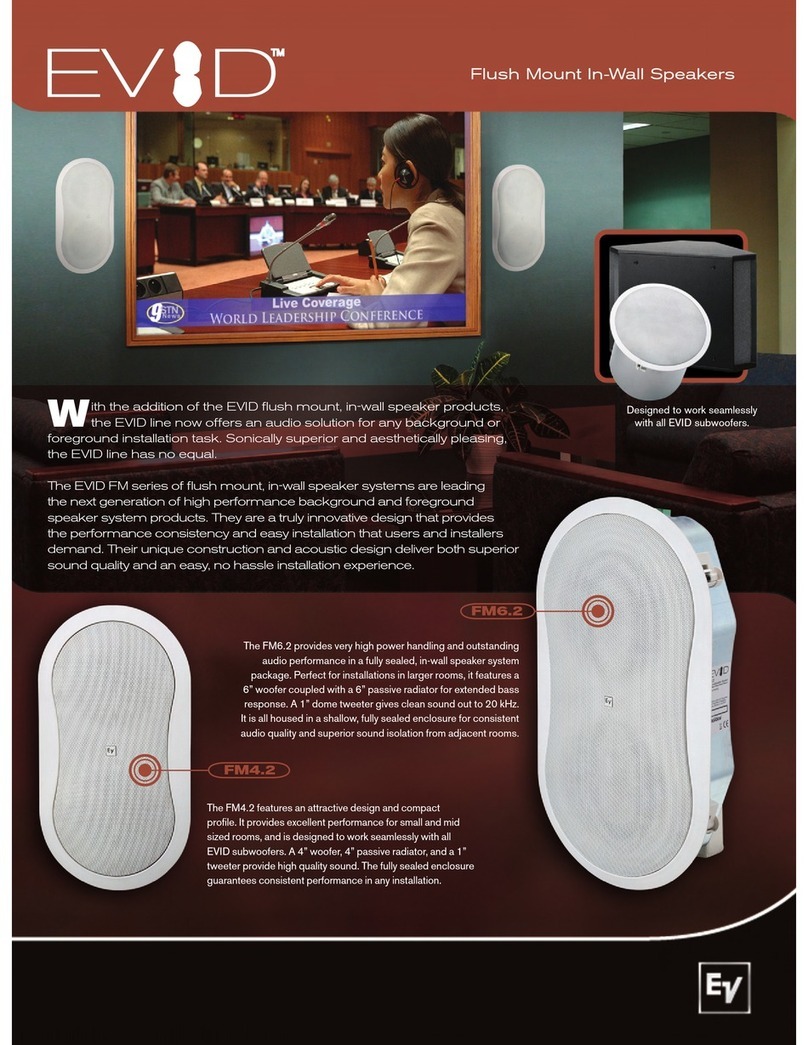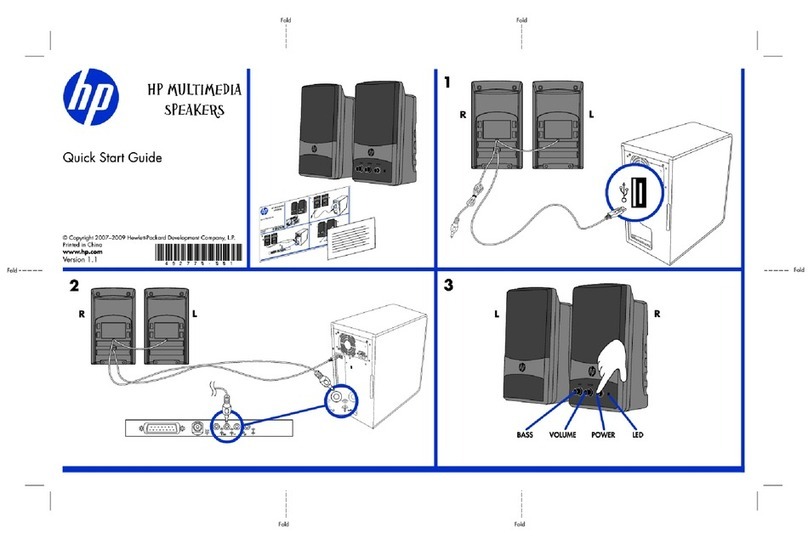INSTALLATION
06
Positioning
The loudspeakers have been engineered to deliver the most faithful sound reproduction, whether they are used for music
or home cinema. In order to enhance their performance, to guarantee a high quality of listening, sound image and tone
balance, it is important to note the following basic rules.
The listening area must be located at the summit of an equilateral triangle whose two other points of insertion
are determined by the position of each speaker. Nevertheless it is possible to modify these distances to find an ideal
compromise according to the particular disposition of the room (fig. A).
Each loudspeaker must be placed at the same height and on the same floor plan. The tweeter should be at the
same height as the listener’s ear, when the listener is in their usual listening area (fig. B).
Avoid placing the loudspeakers too close to the room’s corners or walls. This will induce some unwanted room
resonance and artificially increase bass response. On the contrary, if the bass level proves to be insufficient, it is possible
to move the speakers closer to the walls to adjust the bass level (fig. C).
Optimization
To please the perfectionists, we shall give an optimum positioning formula :if A is the distance from the woofer centre to
the closest wall (floor or wall), B the intermediate distance and C the longest distance (A<B<C), the relation B2=AC
determines the ideal position of the speakers (fig. D).
• Example 1:
The woofer centre is 60cm (24”) from the floor (B=60cm) (mini speaker on a foot), standing 50cm (20”) from
the back wall (A=50cm), the side wall will be ideally 72cm (28”) (C=B2 ⁄ A=72cm).
• Example 2:
The woofer centre is 30cm (12”) from the floor (column speaker) (A=30cm), 1m (39”) from the back wall (C=1m), the
clearance with respect to the side walls will be B=√AC=54.7cm (22”).
User instructions
The sound rendition of the loudspeaker strongly depends upon the listening room acoustics, the place of the loudspeakers
and the listening area. These factors can be modified in order to correct or enhance a desired effect.
Should the soundstage be im-precise or not centred, try to move the loudspeakers closer to each other.
Harsh or aggressive sound means that your listening room is probably too reflective. Try to use any absorbing materials
(such as tapestries, sofa, wall coverings, curtains…) combined with reflective materials to absorb or diffuse resonances.
Should the sound be “flat” or muffled, there are too many absorbing materials in the listening room. The sound
appears to be closed-in, with a narrow stereophonic image. Try to find a better compromise between absorbing and
reflective materials within your listening room.
Generally the wall to the rear of the speakers should be made up of reflective materials so that the sound image exhibits
satisfying volume and width. On the contrary the wall on the rear of the listener should be absorbing in order to avoid
reflections damaging the perception of the stereo soundstage. These reflections may limit the impression of depth of the
sound image. Furniture, such as bookshelves should ideally be placed along the side walls in order to diffuse sound waves
and to prevent some frequencies from being amplified, especially in vocal range (it removes “flutter echo”).
